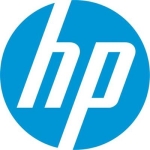What is our primary use case?
It is the end defense against anything coming into our computers and through other channels, e.g., we have some other measures. A lot of our users use Microsoft Remote Desktop Services, so all our servers are locked down. The solution handles what nothing else finds along the way. It is a standard endpoint for computers, servers, and tablets.
How has it helped my organization?
What the user doesn't see or experience, the user is happy with. Every time our other services go in and put a stop pop-up in front of what they are doing when they want to visit a website, but the browser says, "No," or they are trying to download a link and then says, "Oh, no. This is dangerous," that upsets users because they can't do what they want to do. As long as we don't get any of that, then users are happy. If users don't feel it or know about it, then they are happy. Everything else will make them unhappy.
Our end users expect to be protected and that everything works. When IT doesn't work as they expect, then they get unhappy in some form. We kind of forced this solution upon them, so they don't have a choice. As long as it doesn't meddle with their normal work, they are fine. For example, when GDPR hit us in May of 2018, that was upsetting because they now had to do some of their work a little differently. So, they don't like GDPR because it interferes with their normal workflow. Normally, users come to me if they have issues with anything. However, if everything works as expected, they are happy. In addition, they expect that they are protected.
What is most valuable?
When you have something fail and you have three or four different vendors where the fail might be located, everyone just says, "Well, it's awful." Then, you have to go and find out where the fault is. That is really annoying and can cost the business money. For that reason, if I can have one single point of contact when I have a problem to help me out, and say, "Let's find the solution." That is much better instead of having me contact multiple companies to track errors down.
What needs improvement?
The protection will always need improvement:
- From a technical standpoint, I would like better artificial intelligence on how it does its stuff in the background. It will always be behind. However, at some point, it would be nice if it could get better. It is not bad, but it could always be better.
- From an audit point of view, our auditors would like to have more reports on how things are used, if things go wrong, and how they went wrong. For example, if something got a warning, "Why?" So, we would like more versatility for tracing and reporting. That would improve the product, as long as the user interface doesn't get bogged down.
For how long have I used the solution?
I have been using the current solution since 2014.
What do I think about the stability of the solution?
We haven't had any issues. I haven't had any bad experiences. I expect it to work, and it works. It is just there. For example, when you have Word or the whole Office package, as long as it works, people are happy. You just have it, and you don't have to say, "Oh, this version is really..." It is just Microsoft. For most users, Microsoft is Windows, Defender, and the Office package. As long as you just use that, then people will say, "Okay, we're just basically using Windows." They don't care about one thing or another, as long as IT works.
As long as things are slowly upgraded, it works, and we don't have any issues, then I am happy.
What do I think about the scalability of the solution?
I let my outsource company handle scalability. I only get involved if there are issues.
We have 50-plus servers with around 125 to 150 endpoints.
How are customer service and support?
Our consultancy has a deal with Microsoft where they can get access to Microsoft directly. We are part of that deal. When we have issues that need some type of Microsoft input, we can get it. However, I will let the consultancy do that. I wouldn't do that myself.
Which solution did I use previously and why did I switch?
We use different email solutions and web solutions to handle incoming and outgoing traffic. However, we have not previously used another endpoint protection solution.
How was the initial setup?
In 2014, we upgraded from Windows 7. It was a completely new deployment of everything. Every server, every endpoint, and even the old laptops and desktops were upgraded. So, it wasn't just Defender. Microsoft Defender wasn't really the issue, as it worked. We had a lot of other IT that was annoying, but I don't remember that we had any struggles with Defender.
Microsoft Defender is always running. It is doing its job, so it is fine. I don't have any issues with the way it was implemented or how we are running it. We have been upgrading IT throughout the years, but there have been no issues.
We had a migration deadline set by our mother company. We had to stop using Windows 7 and server 2003 by 15th of June, and we started in April. So, it was done in just under two months right before June 1st.
What about the implementation team?
We are part of the aircraft industry. We have been going downhill for some time, and now we are sort of going up again. At the time of purchase, we simply bought the outsourcing with the solution, meaning we would get this many machines and servers using these services. They kind of supplied everything.
We outsourced the deployment to another company at that point in time, who put up all the consultants and stuff. Before that, we had everything internally and on-premises. At that point, we moved it out still on-premises, but not in our own house. So, we built a separate system, then moved users over.
We didn't have Microsoft in to specifically help us.
The administration of this solution is outsourced. We use a consultancy who has 50-plus employees/consultants. They take care of nearly all services: Defender, Teams, SQL, etc. I then only have to talk to one or two people who are specialized in what needs to be done.
I have been very happy with our current IT services provider. We have had them for about a year. They took over from the old consultancy who installed our IT in 2014. Our current consultancy took over in 2020 because I wasn't so happy with the old guys.
What's my experience with pricing, setup cost, and licensing?
It provides peace of mind with really good pricing. It won't be upsetting my budgets or anything like that.
Which other solutions did I evaluate?
Our outsourcer handled the decision that we were to use Defender, Remote Desktop Services, etc. They just said, "If you choose us, this will be your solution." It came as a package. Unfortunately, that company was bought by another IT services company, who bogged everything up. The service went downhill and stuff didn't get upgraded. So, we switched to another Danish supplier with whom we currently are happy.
What other advice do I have?
Go for it. It is a standard solution. If you use Windows, you might as well go for Defender. With this solution, you have your normal dependencies within Microsoft. This means that you don't have to talk to another company; you talk directly to Microsoft. Some people might go for something else, and that is fine too. However, depending on how big your company is, if you are a small or medium business, you may want to have as many eggs in one basket to have fewer points of contacts.
It is a good endpoint. All the administration is handed over to our outsource partner. So far, it has been good. We have been using it for years, so it is the de facto standard for us right now.
As far as I know, its capabilities are okay. It is up there with the rest of them. Sometimes, this is what Gartner says is the best, the next best, the 10th best, etc. That will always change. As long as we don't get hit, we are fine. If we get hit, then there are questions around what we can expect from it, what we can get out of it, what help did we get, etc., but I would let my outsource partner deal with that. Directly, I don't have my hands on it.
I would rate this solution as an eight out of 10.
Which deployment model are you using for this solution?
On-premises
Disclosure: My company does not have a business relationship with this vendor other than being a customer.
















